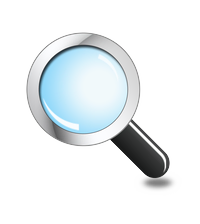HEATING AND COOLING Mold Remediation Solutions
Residential HVAC Mold Remediation Providers
A Plus Enviro-Services residential air duct and vent cleansing experts are qualified and trained in residential duct cleansing and HEATING AND COOLING system mold cleansing and restoration. We provide customized domestic HVAC duct and vent cleansing, mold remediation, and other cleaning services. Our objective is to offer economical, educational, truthful, regional and high quality assistance to our residential clients by enhancing their indoor air quality, energy effectiveness, and security. Did you know air-borne contaminants are pulled into the air ducts whenever the cooling and heating system runs. In time, these contaminants increase inside the ductwork, forming an ideal breeding ground for mold, germs, fungi, and other microorganisms.
How We Do It
The presence of microbial growth (mold) in an A/C system is a typical issue and a variety of factors can contribute to the microbial growth. The HVAC system, consisting of piping and drain pans, can be sources of microbial growth. An elevated mold condition can cause many different negative effects with the most common problem being allergic reaction symptoms. The items brand-new is that typically mold contamination in A/C systems and air vents are restricted to little locations.
Cleaning is generally not really intricate. Do not waste your cash with unqualified companies and scammers. Call us for a totally free and instructional estimate today. Strong Acid Water Sanitizer A Plus Enviro-Services utilizes a strong acidic water as a sterilizing representative since it's natural, totally safe for humans, family pets, and the environment. This strong Acidic Water is an electrolytic water with electrical potential, which means that its chemical decomposition is produced by passing an electrical current through a liquid or solution consisting of ions. This includes the hypochlorous acid (SDS) produced from an anode when electrolysis occurs. It is made by applying an electrolysis enhancer to faucet water, this in itself is not a chemical.
Strong Acidic Water 2.5 pH works as an antifungal, anti-bacterial, and an antiviral agent. This water kills bacteria within approximately 30 seconds, and since of this the water is stronger than popular disinfectants and it has multi-purpose usage. Strong Acidic water was authorized for sanitizing foodstuff in June 2002, in accordance with the Food Health Law, under the name hypochlorous acid water.
Discover more Why Choose United States A Plus Enviro Services Inc. DBA Air Duct Cleaning Plus is fully licensed, bonded and guaranteed. What our consumers are saying We can extremely advise them as a super friendly and expert specialist who assisted us tremendously with a recent inspection of our house's air duct/vent system.
Indoor mold Wikipedia
Fungal growth that establishes on wet products Indoor mold on the head jamb of the window in a multi-storey building. Mold (American English) or mould (British English), likewise sometimes referred to as mildew, is a fungal growth that develops on wet materials. Mold is a natural part of the environment and plays an important part in nature by breaking down dead organic matter such as fallen leaves and dead trees; indoors, mold growth need to be prevented. Mold reproduce by methods of tiny spores. The spores are like seeds, but undetectable to the https://en.search.wordpress.com/?src=organic&q=Mold inspection naked eye, that drift through the air and deposit on surface areas. When the temperature level, wetness, and readily available nutrient conditions are right, the spores can form into brand-new mold colonies where they are transferred.
Direct exposure to high levels of mycotoxins can result in neurological problems and death. Extended exposure (for example, everyday exposure) can be especially hazardous. Mycotoxins can persist in the indoor environment even after death of the fungis. They can abide by dust particles and can spread out through the air attached to these dust particles or spores. [3] There should be very specific temperature level and humidity conditions in order for fungi to produce mycotoxins.
Symptoms [modify] Signs of mold direct exposure may include nasal and sinus blockage; runny nose, eye irritation; itchy, red, watery eyes, breathing problems, such as wheezing mold inspection cost and trouble breathing, chest tightness, cough, throat irritation, skin irritation (such as a rash), headache, and consistent sneezing.
Immune-compromised individuals and individuals with persistent lung diseases, such as obstructive lung disease, may buckle down infections in their lungs when they are exposed to mold. These individuals should keep away from locations that are most likely to have mold, such as compost piles, cut lawn, and wooded locations.
Asthma [modify] Babies might develop breathing signs as an outcome of exposure to Penicillium, a fungal genus. Signs of mold-related breathing problems in a baby consist of a relentless cough or wheeze. Increased direct exposure increases the likelihood of developing respiratory symptoms throughout the first year of life. Studies have indicated a correlation between the likelihood of developing asthma and exposure to Penicillium.

Causes and growing conditions [edit] Mold is discovered all over and can grow on nearly any substance when wetness exists. They recreate by spores, which are brought by air currents. When spores arrive at a moist surface suitable for life, they begin to grow. Mold is generally discovered indoors at levels which do not impact most healthy individuals. Because common structure products are capable of sustaining mold development and mold spores are ubiquitous, mold growth in an indoor environment is normally associated with water or moisture exposure and might be triggered by incomplete drying of floor covering products (such as concrete). Flooding, dripping roofings, building-maintenance or indoor-plumbing issues can lead to interior mold development. Water vapor commonly condenses on surfaces cooler than the moisture-laden air, allowing mold to flourish. [citation needed] This moisture vapor passes through walls and ceilings, typically condensing during the winter in environments with a long heating season. Floorings over crawl spaces and basements, without vapor barriers or with dirt floors, are mold-prone. The "doormat test" discovers wetness from concrete slabs without a sub-slab vapor barrier.